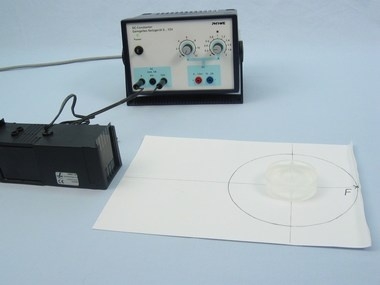Principle
The experiments on accommodation in the human eye and on the defects of vision and their correction are appropriate for showing the application and validity of the laws of physics in a biological context.
In this experiment, the students should apply their knowledge about the light path in convex lenses and the changes in focal length for lenses differing in thickness (combinations of lenses) to the human eye. In the first part of the experiment, image formation on the retina is considered using parallel incident light and in this way the position of objects at infinity is simulated. Starting from observations of light incident to the optical axis at a slight angle, image formation on the retina can be explained. By changing the lens in the second part of the experiment, a sharp image on the retina is also observed with divergent incident light (simulated position of the object near the lens).
The experiment is demanding in terms of abilities and experimental skills required of the students. On the other hand, due to its motivational value in the consideration of questions related to physics, it has a highly significant worth.
Benefits
- Multifunctional light box - All-in-one: Can be used for geometric optics on the table, colour mixing and on an optical bench
- Extension with others sets at anytime, no additional light sources needed, recognition value for students
Tasks
How are we able to see both near and far objects with our eyes? Investigate the path of light in the human eye with the help of a model when:
- Focusing the eye (accommodation) on a far away object.
- Focusing the eye on a near object.



